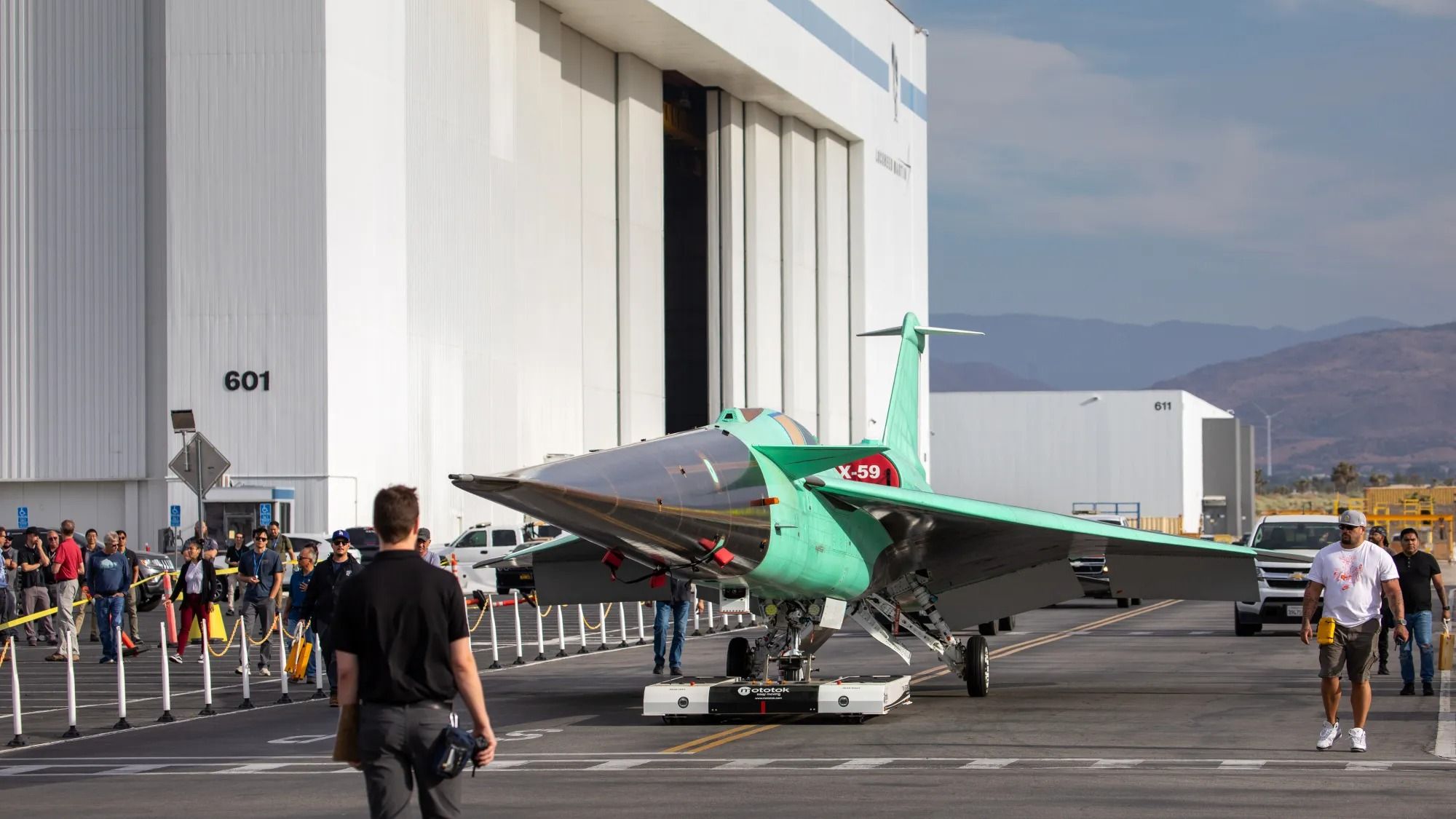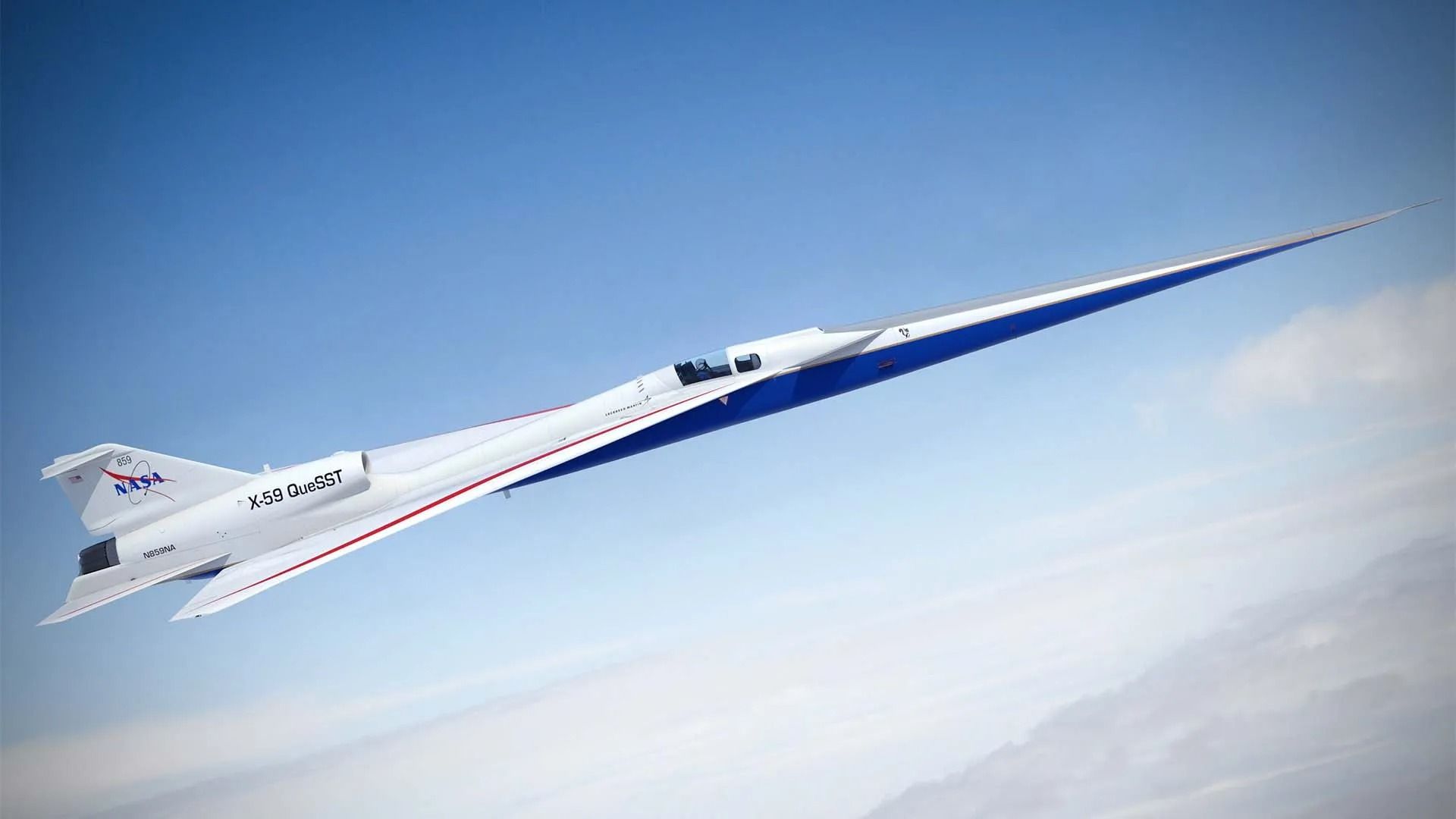Summary
- NASA’s X-59 supersonic aircraft has moved to a painting facility in California, bringing the agency’s vision to life.
- The paint scheme features a primarily white body with “sonic blue” underneath.
- The first flight of the X-59 was originally scheduled for this year but has been delayed.
NASA (The National Aeronautics and Space Administration) is making progress on its X-59 quiet supersonic aircraft. Last week, the jet moved to Palmdale, California, at the Lockheed Martin Skunk Works facility to receive a paint job.
The development comes after the agency confirmed that the first flight for the supersonic aircraft is scheduled for next year. The X-59 is experimental, as NASA was awarded two contracts to develop the technology needed for air travel at speeds up to Mach 4, double the speed of the beloved Concorde.
Paint scheme details
The aircraft was transported to the painting facility on November 14. After completing the paint job, NASA will perform final measurements on the weight of the jet and its exact shape to improve computer modeling. Cathy Bahm, Project Manager of the agency’s Low Boom Flight Demonstrator Project, said seeing the X-59’s fresh livery brings their vision to life.
“We are incredibly excited to reach this step in the mission. When the X-59 emerges from the paint barn with fresh paint and livery, I expect the moment to take my breath away because I’ll see our vision coming to life. The year ahead will be a big one for the X-59, and it will be thrilling for the outside of the aircraft to finally match the spectacular mission ahead.”
Photo: NASA
According to NASA, the paint scheme comprises a primarily white body with NASA “sonic blue” underneath and red accents on the wings. The agency said the livery is not just for viewing pleasure but will protect the aircraft from moisture and corrosion during flight. The scheme also includes essential safety markings that will help with ground and air operations.
Gathering data
Designed to fly faster than the speed of sound, the X-59 will simultaneously reduce the sound of a typical sonic boom to a so-called “sonic thump,” NASA explained. It is also the main component of NASA’s Quesst mission, in which the jet will fly over several communities in the US, allowing the team to gather data about its performance and people’s perceptions about the sound it creates while airborne.
“NASA will provide that data to regulators which could potentially adjust current rules that prohibit commercial supersonic flight over land,” the agency said.
First flight timeline
The X-59 was initially scheduled to perform its first flight this year, but the Quesst team reportedly encountered “several technical challenges.” NASA said more time is needed to install systems on the jet and ensure they work correctly. Intermittent issues regarding safety-redundant computers that control the aircraft’s systems were also discovered and are reportedly being resolved.
Last month, NASA confirmed that the X-59 was on track for its first flight in 2024 as the jet underwent integrated testing. Following the testing phase, a flight readiness review will be conducted, which is reportedly when the agency will release more details for its first flight.
“Safely and reliably flying the X-59 is critical for NASA to achieve those benefits,” NASA said in a statement. “The agency is committed to a thorough review and testing process that results in the success of that mission.”


